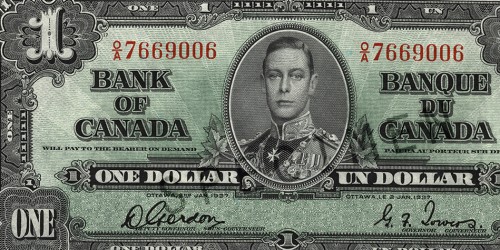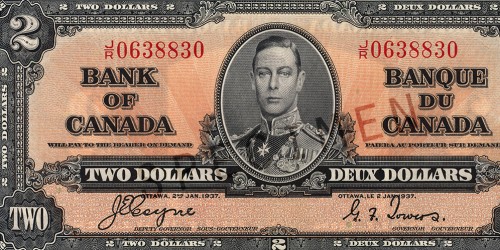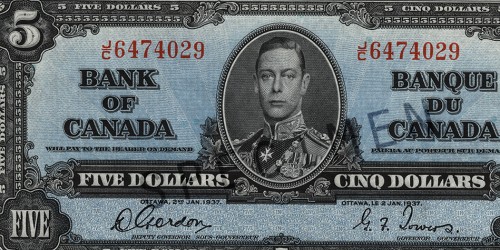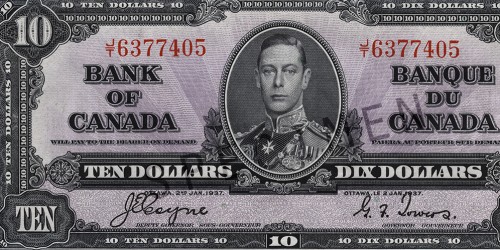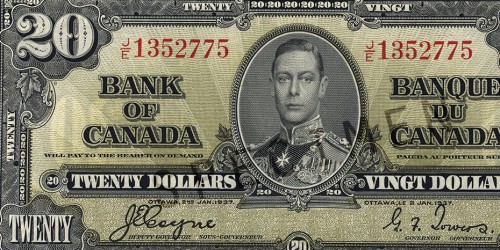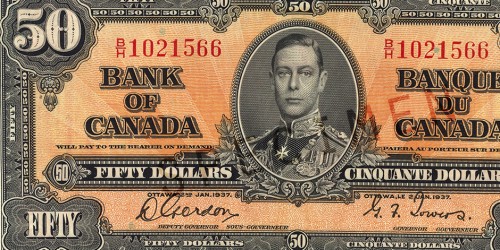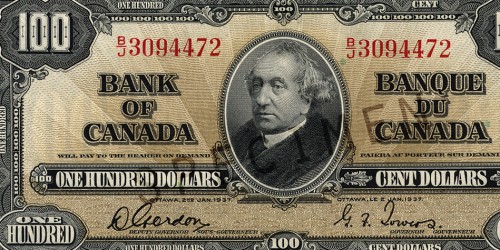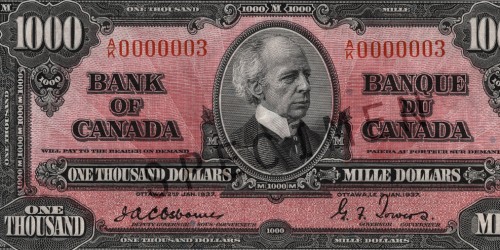1937: The Bilingual Series
The glimmerings of a Canadian identity begin to appear in these bank notes, produced only two years after the first series was issued. The death of King George V, quickly followed by the abdication of his son, Edward VIII, prompted some quick re-designs, but the Bank took this opportunity to make some very formative changes. The portraits were limited to the King for all the common notes and Laurier and MacDonald for the big denominations. A pre-cursor to official bilingualism, government legislation decreed that Canada’s new bank notes feature French and English, changing the typographic approach. The portraits were moved to the centre, which made a symmetrical design appropriate to bilingual wording and kept the King’s face safely away from the inky index fingers of bank clerks. The designs were now more uniform across the series and a new, clearer colour was chosen for each denomination - a familiar colour scheme that, with variations, has since been used on all our note series.
The rear views of the notes remained fundamentally the same as the 1935 series with changes in colours and placements of numbers to bring more uniformity and clearer identity. The tight schedules created by the abdication meant that there was little the Bank could do to produce a completely new series. There would be time enough for that later.
